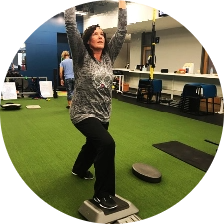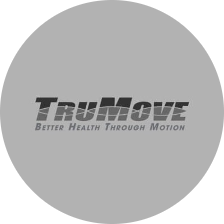Services
Experience Hip Pain Treatment

Hip pain is a general term that refers to any pain felt in the hip area or around the hip joint.
It is worth noting that pain or discomfort may not always be felt in the hip itself. In some cases, it is felt in the groin or thigh. It is usually some indication of the pain’s cause.
People experiencing this may need hip pain therapy to recover.
Causes of Hip Pain
The following are the most common causes of pain in the hip area:
Inflammation in the Tendons
As the thick band of tissues attaching the bone to the muscles, tendons help facilitate movement. Overuse and repetitive stress can cause these tendons to be inflamed. Over-exercise is a common cause for the inflammation. This is also called tendonitis.
Although tendonitis can be very painful, in many cases, the condition subsides after a few days.
Arthritis
If there is long-term hip pain especially in older adults, the likely cause is arthritis. It can also cause stiffness, difficulty in walking, an overall reduction in mobility and tender joints. Arthritis can develop into inflammation of the hip joint and the breaking down of the cartilage that acts as a cushion for the hip bones.
With arthritis, the pain and reduction in mobility may get gradually worse over time.
The following are the types of arthritis that can cause hip pain:
- Osteoarthritis – This is the most common arthritis type. It can be caused by aging and the wearing down of the cartilage surrounding the joints. It can also be caused by trauma to a joint or a fracture that developed into osteoarthritis.
- Infectious arthritis – This is caused by an infection in the joint that eventually caused the destruction of the cartilage.
- Rheumatoid arthritis – This is caused by the body’s immune system attacking the joints. Over time, this type of arthritis can destroy the joint, cartilage, and bone.
Trochanteric Bursitis
Bursa is the sac near the hip joint filled with a fluid substance. It functions as a gliding surface to reduce the friction when moving. There are several bursae in the body. They can be found near bones, muscles, and tendons. The hip has two major bursae.
Hip or trochanteric bursitis occurs when there is an inflammation of the bursa. This can happen after a hip injury or if there has been overuse of the joints. Problems with the posture of the individual can also result in this condition.
Hip Fractures
Hip fractures can be caused by injury in the region. In older adults, the more common cause for hip fractures is the weakening of the bone structure brought on by aging, osteoporosis, or other factors.
Fractures in the hip cause sudden and severe pain in the hip area. They also likely require medical attention since they can lead to complications such as a blood clot in the leg. In many cases, surgery is required to correct the fracture.
People who suffer hip fractures also need to undergo physical therapy.
Other Possible Causes
The following are less common causes of hip pain:
- Snapping hip syndrome – More common in athletes and dancers, this condition is characterized by a snapping sound or sensation in the hip when mobile. Although this condition is usually painless, in some cases, the individual may feel pain or discomfort. This could also indicate a tear in the cartilage.
- Osteonecrosis – Also called avascular necrosis, this condition occurs when blood does not reach the bones which can result in the loss of the supporting bone. As it progresses, the cartilage will eventually collapse. The following increase the risk of getting this condition:
- Heavy steroid use
- Heavy alcohol use
- Injury in the joint
- Certain cancer treatments
Diagnosing Hip Pain
The process of diagnosing the cause of hip pain involves probing questions from the doctor, a physical examination, and imaging scans.
The doctor may ask whether the pain is worse at certain times of the day, whether the pain affects the person’s ability to walk or move, when the symptoms started, and others.
If arthritis is suspected, a series of fluid and imaging tests may be recommended. This includes testing blood, urine, and even joint fluid. Imaging tests may include x-ray, CT scan, MRI, and even ultrasound. The doctors will need to see the bone, cartilage, and other tissues present in the hip.
Treating Hip Pain
Treatment options for hip pain change depending on the cause of the pain. Exercise-related pain, for example, will often be treated with rest. People suffering from arthritis will typically be prescribed pain medication.
At Superior Physical Therapy Center we don’t recommend any hip pain medication, which we believe is merely a band-aid solution and not a cure to the true cause of one’s hip pain.
In cases of hip fractures, malformation of the hip, and certain injuries in the area, surgery may be recommended by a doctor.
However, these traditional solutions have been found to only work around 45% of the time. They are only usually designed to alleviate the pain experienced by the patient at the moment, leaving the underlying cause untreated.
This is where our treatment options come in. At Superior Physical Therapy, we work hand-in-hand with patients to deliver long-term solutions to hip pain. This may include the following:
Dry Needling
Contrary to how it may sound, dry needling is a safe and virtually painless treatment option. Although it may cause minimal discomfort, it is particularly effective for patients with musculoskeletal presentations.
This treatment uses monofilament needles to treat certain trigger points in the muscular tissues. These trigger points are usually local contractures in the muscle fiber that can cause local or referred pain or restrict mobility.
Heat and Cold Therapy
Some situations only call for either heat therapy or cold therapy. However, in some cases, both may be effective.
Heat therapy is done by increasing the temperature of the affected area which effectively improves circulation and relaxes muscles. It can also help heal damaged tissues.
Cold therapy, on the other hand, aims for the opposite. When the temperature is lowered in the affected area, the blood flow is slowed which effectively reduces inflammation, swelling, and pain. This is particularly helpful if the pain is close to a joint or tendon.
Deep Muscle Stimulation
This treatment option uses mechanical vibrations that penetrate deep into the muscle tissue. These vibrations stimulate proprioceptive functions that improve circulation, increase lymphatic flow, and facilitate tissue regeneration.
These vibrations also increase muscle metabolism and improve the lactic acid cycle, which addresses one of the most common causes of pain.













